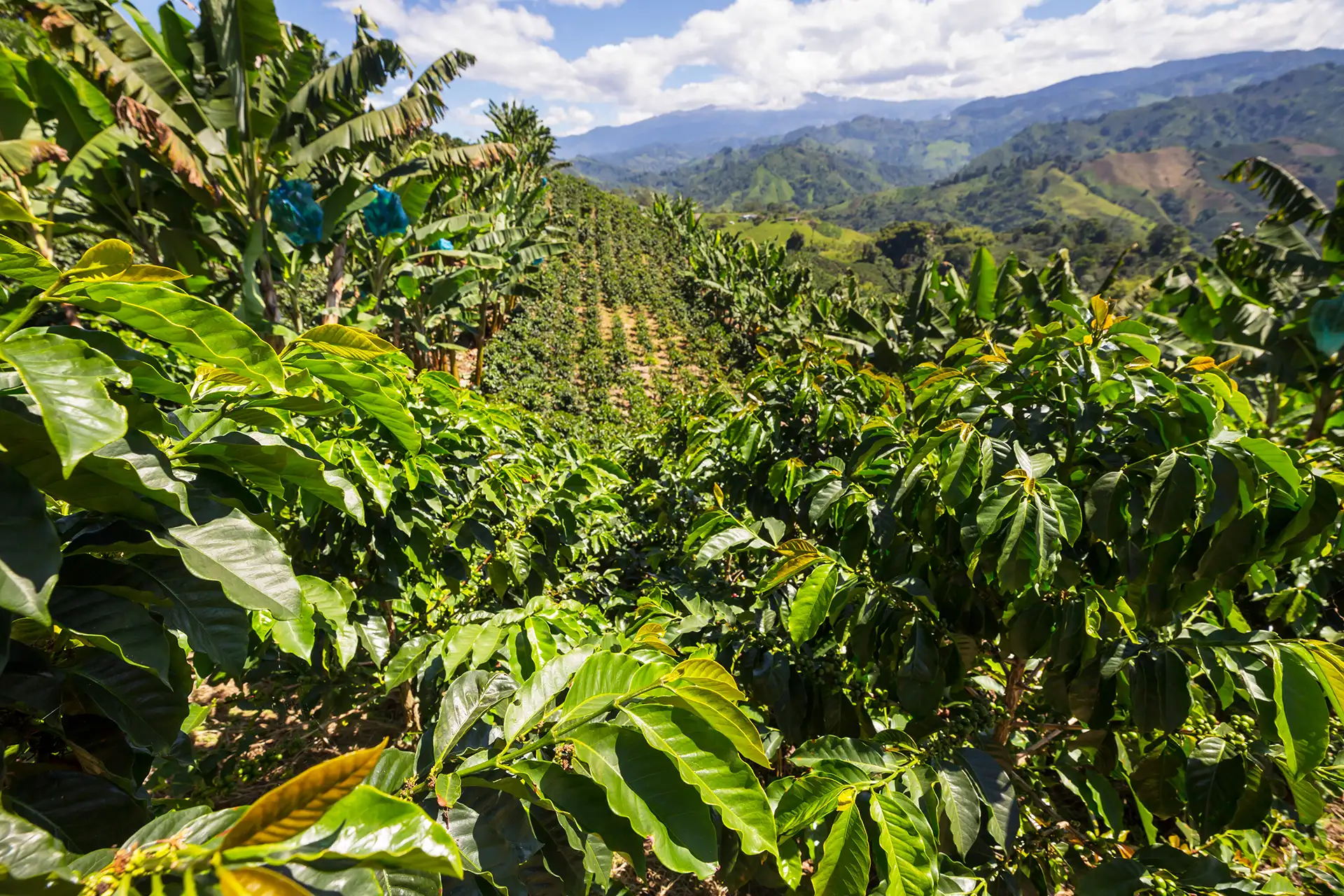My Cart
No products in the cart.

When it comes to coffee, connoisseurs seek an immersive experience transcending a mere morning boost. They yearn to unravel the distinct taste profiles stemming from diverse coffee-growing regions.
Exploring the geography of coffee production is a great journey. By getting a glimpse into the major coffee-growing areas, we uncover the secrets behind their distinctive flavor notes.
This knowledge reveals the intricacies of coffee cultivation and how it impacts taste. Armed with this knowledge, we can make informed coffee purchases and savor the unique flavors each region offers.
Ready to embark on a coffee journey that expands your horizons? Let’s do this!
Nestled between latitudes 25 degrees North and 30 degrees South, the “Bean Belt” spans the globe like a lush green ribbon, cradling the ideal climate for coffee trees. Within this equatorial haven, the finicky Arabica flourishes at lofty heights in nutrient-rich soil, while its robust cousin, Robusta, thrives in warmer embrace at lower elevations.
This 10-million-hectare sprawl of coffee farms provides flavors that are as diverse as the lands that nurture them. Even though they grow within a similar latitudinal belt, coffees from this region showcase dramatically different flavor profiles.
And that’s due in large part to one crucial factor: geography.
Unique soil chemistry, diverse weather patterns, hours of sunlight, rainfall, altitudes, and processing methods all contribute to the incredible range of flavors you taste in your cup.
Central America is at the top of the Bean Belt, with most coffee beans coming from Guatemala, Nicaragua, El Salvador, Honduras, and Costa Rica.
Central America coffee beans as a whole are exceptionally well-balanced, medium-bodied, and mild. They have medium acidity and a clean, bright taste and are enjoyed in almost every specialty coffee shop around the world.
The South America coffee region includes Brazil, Colombia, Bolivia, and Ecuador. Most of us have heard about Colombian coffee—it’s one of the most talked about and popular coffees.
But it’s Brazil that produces the highest coffee volume in the world by far—a title that the country has held for the past 150 years.
Though closely similar in attributes to the Central American coffee, South American coffee is often mild-bodied. It is a bit creamier, gives a clean cup, and often with an appreciable chocolate aftertaste.
The African coffee region encompasses a handful of countries, namely Kenya, Ethiopia, Tanzania, Rwanda, Burundi, and Uganda.
Africa’s coffee scene offers a tantalizing blend of sweet, fruity, and delicate floral aroma.
Ethiopia, one of the continent’s star producers, accounts for 3% of the global coffee market. Its beans boast a unique floral sweetness, while 60% of the country’s foreign income comes from coffee exports.
Ethiopian coffee primarily comes from trees in three central regions: Sidamo, Harer, and Kaffa.
Ethiopian Arabica bean varieties include Longberry, Shortberry, and Mocha. The largest bean, Longberry is considered superior in quality and flavor. The Shortberry variety, which originates in Eastern Ethiopia are smaller coffee beans as the name suggests, but are still considered a superior grade coffee bean. Shortberry coffee beans have a deliciously spicy full body, spiked with a floral-acidity and fruity blackberry notes. The Mocha coffee bean variety is a highly sought-after commodity, known for the complex and heady spice notes, sharp, juicy citrus and smooth, rich chocolate.
Kenya, with its coffee plantations on the slopes of Mount Kenya, is another major force. Here, you’ll find full-bodied beans that will awaken your senses with their uplifting fragrance.
In the Middle East, Yemen is the major coffee producer. Because their coffee crops originated from Ethiopia, coffees from this region have very similar attributes and characteristics to Ethiopian coffee beans.
Yemen coffee growers dry-process beans which creates a bright, full-bodied and spicy brew that dances on the taste buds.
Coffee has been grown and consumed in Southeast Asia since the late seventeenth century. This region is particularly famous for Vietnamese and Indonesian coffee beans.
The Indonesian islands of Sulawesi, Java, and Sumatra produce distinct, full-bodied, rich, and earthy beans, commonly used in blends. Beans produced here have clean, smooth characteristics, with a juicy fruit taste and nutty aroma.
The enticing aroma of coffee beans wafts through the air as Vietnam—the world’s second-largest exporter—unfolds its exquisite flavors. Its mild, delicate beans, with a medium body, enchant coffee lovers worldwide. Diverse coffee varieties thrive in Vietnam’s microclimates, including Robusta and Arabica.
But Vietnam is not the only coffee paradise. Sumatra’s reputation for producing exceptional coffee beans remains unmatched, captivating palates with its low acidity, earthy aroma, and decadent dark chocolate notes.
Laos showcases its agricultural prowess, boasting Southern Laos’ exceptional Arabica coffee, renowned for its light citrusy and floral undertones. Interestingly, Laos also cultivates Robusta coffee at higher altitudes, resulting in a truly distinctive and unforgettable bean.
